Category: Interactive Learning
Showing 21–39 of 39 resultsSorted by latest
-
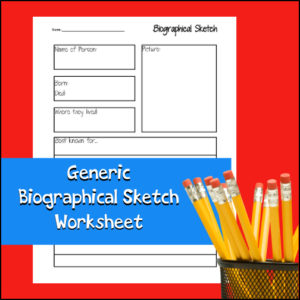 $1.50Buy Now
$1.50Buy NowStudents can use this worksheet again and again to record short biographies on any person for any subject. This worksheet can be used alone or as part of a larger report or notebooking project. Students can report on inventors, scientists, explorers, mathematicians, musicians, famous Americans, etc!
-
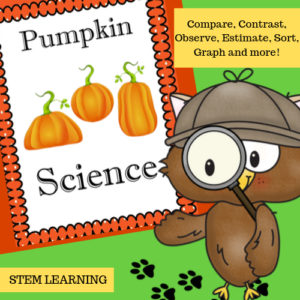 $3.00Buy NowPumpkin Science has several fun, hands-on activities that ask students to compare, contrast, observe, estimate, count, sort, investigate, graph and much more…Students can even create a Pumpkin Science Journal or use pages as notebooking pages.See more about this product in the description below.
$3.00Buy NowPumpkin Science has several fun, hands-on activities that ask students to compare, contrast, observe, estimate, count, sort, investigate, graph and much more…Students can even create a Pumpkin Science Journal or use pages as notebooking pages.See more about this product in the description below. -
 $4.50Buy Now
$4.50Buy NowThere are over 500 known species of sharks in the world! Most students love studying sharks and this unit has been created to help students record the knowledge they learn during a study on sharks as well as personal reflections of what has been learned.
This resource includes:
- – Creating a Notebooking Project…What is Notebookiing?
- – Supply list
- – Teacher pages
- – Student organizational pages
- -‘Jump off’ Questions designed to get students thinking about the different shark related questions they can research
- – 32 Notebooking pages
Notebooking is a coined term for what can also be referred to as educational journaling or scrapbooking.
-
 $5.00Buy Now
$5.00Buy NowA fun, interactive nature scavenger hunt that can be used by an individual student, a classroom or family.
⭐ Take this resource and go outside and explore! See how many things that can be found that begin with each letter of the alphabet. You can choose to do one letter at a time, several letters or the entire 26-letters. The choice is up to you!
As items are ‘discovered’ on your outdoors adventure, there is plenty of room for students to draw pictures of those items. Some letters, like the letter “Z”, may be trickier than others. This is when YOU can change it up a bit and tell students they can find things shaped like the letter “Z”. How fun!
Use at a park, a zoo, a botanical garden, on a riverwalk, at a pond or even in a backyard!
⭐This resource is designed to get students excited about exploring and recording what they find.
-
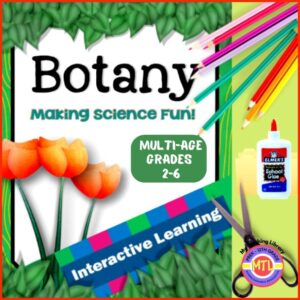 $10.00Buy Now
$10.00Buy NowGive students an engaging way to learn about plants with this interactive, project based resource. Designed to be used for multiple ages and grades, 2nd-6th grades, students will learn about plants:
- – classification
- – photosynthesis
- – the plant cell
- – parts of the plant
- – things plants need to grow
- – the life cycle of a plant
- – plant leaves
- – different types of plants (non-flowering, carnivorous, poisonous)
-
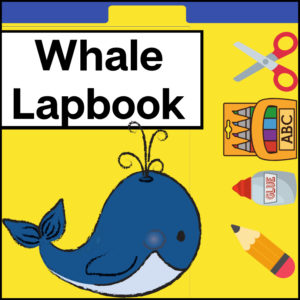 $3.00Buy Now
$3.00Buy NowStudying marine animals? Whales perhaps? If so, your students will love the student-centered, hands-on, cross-curricular project! During this project on whales, your students will learn about about these majestic creations of the oceans. Students will read and research, report and create…and have FUN all at the same time.
Some questions they will answer: What do whales eat? How do they eat? What are the different types of whales? Do whales have calls? What type of threats are there to their survival?
-
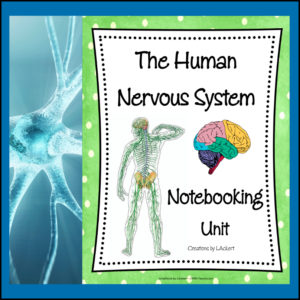 $5.00Buy Now
$5.00Buy NowThis BIOLOGY / HEALTH / ANATOMY / BODY SYSTEMS resource centers around the human nervous system and is a notebooking project unit. This interactive 56 page resource will require students to perform research and can be used independently or along side your curriculum.
-
 $5.00Buy Now
$5.00Buy NowDesigned to use with multiple age / grade levels, this 79 page Shark Lapbook resource will teach students about…SHARKS! By the end of project, students will not only have learned about sharks but will have a lasting project that they have created.
Included:
- – Basic Lapbooking instructions
- – 11 Informational pages on sharks (informational articles, diagrams, species specific details and more)
- – OVER 50 pages of templates and instructions on how to use the templates
- – Vocabulary with definitions
This can be a self-contained resource (using no other outside research materials) or students can do further research to learn even more!
See a product preview @ Sharks Lapbook Preview
-
 $2.75Buy Now
$2.75Buy NowEasy-to-use, step-by-step, print-and-go guide for students to use as they learn to write a 5-paragraph essay! This nature-themed resource has a local bird focus and guides students as they research, observe and write about one bird species that lives in their local area.
This 3-page resource outlines paragraph by paragraph what to include and gives space for students to write detailed notes.
What will students learn and observe about a bird species before they begin writing?
– where the bird geographically lives
– habitat(s) where they are most likely found
– physical characteristics (coloring, markings, size, bill, feet)
– diet (herbivore, carnivore, omnivore) and where/how they find/gather their food
– predators and self-protection
– interesting factsPlus, this guide will encourage students to reflect on what they have learned.
Once completed, students will be able to take the guide and their notes and write amazing 5-paragraph essays!
Use once as one assignment for one bird of their choice or use again and again to create an entire collection of essays on local birds. Regardless of where you live, these pages will have students observing and learning about local birds.
-
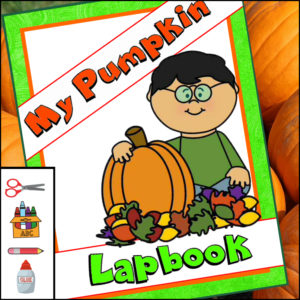 $3.00Buy Now
$3.00Buy NowThis interactive unit for students will allow them to create a cute LAPBOOK about PUMPKINS! Great to use anytime, especially in October or November during the Fall Holidays.
See description below for more details on this resource AND suggested uses.
-
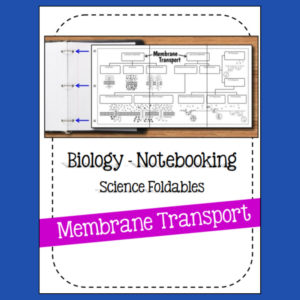 $3.00Buy Now
$3.00Buy NowHigh School Biology Notebook resource!
Students will learn all about the cell membrane. Terms include: phospholipid, phospholipid bilayer, integral protein, peripheral protein, cholesterol, glycolipid, oligosaccharide/sugar chain, glycoprotein, transport, attachment and recognition, receptor for signalling, enzymatic activities
-
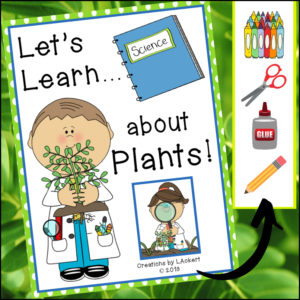 $6.00Buy Now
$6.00Buy NowLet’s Learn about Plants is a Science resource that can be used in conjunction with your own curriculum or as a separate – individual unit! Students will be actively learning as the cut, color, paste, write and learn! They will learn about the parts of a plant and the life cycle!
Plant vocabulary: seed, sprout, seedling, plant, roots, stem, leaf, soil, sunlight, water, air, flower, bud, trunk, branch, crown.
-
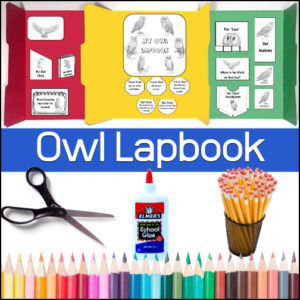 $4.00Buy Now
$4.00Buy NowThis engaging, hands-on project will give students the materials necessary to learn all about owls and create a great project to display their learning!
Suggested for 3rd-6th grades. (See description for more information)
-
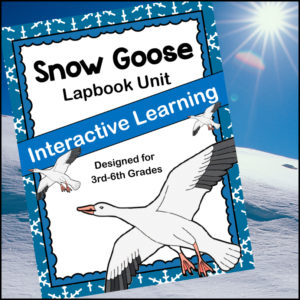 $4.99Buy Now
$4.99Buy NowThis resource contains everything your students need to complete it. No need to do additional research, although this should be encouraged. So whether you are looking for a completely self-contained unit or one that allows for in-depth study, this is it…Snow Goose Lapbook Unit!
Students will study all aspects of the Snow Goose’s life, vocabulary related to the informational reading contained within the unit, complete map work and more.
-
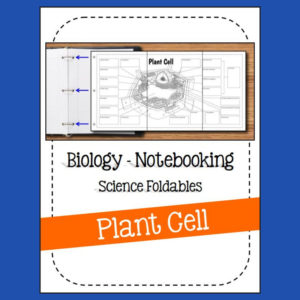 $3.00Buy Now
$3.00Buy NowHigh School Biology Notebook resource!
Students will learn the following terms: plasmodesma, amyloplast, peroxisome, Golgi body, Golgi vesicles, tonoplast, central vacuole, mitochondrion, chloroplast, cytoskeleton, nuclear pores, nuclear membrane / envelope, DNA in nucleoplasm, nucleolus, nucleus, rough endoplasmic reticulum, smooth endoplasmic reticulum, ribosomes, cytoplasm, cell wall, cell / plasma membrane
-
 $3.00Buy Now
$3.00Buy NowHigh School Biology Notebook resource!
Students will learn all about the cell membrane. Terms include: passive transport, active transport, diffusion, osmosis, facilitated diffusion, molecular active transport, bulk transport, primary active transport, secondary active transport, exocytosis, endocytosis, phagocytosis, pinocytosis, receptor mediated endocytosis
-
 $7.00Buy Now
$7.00Buy NowHelp your students become self-learners as the plan, research, organize and most of all…LEARN as they create their own Volcano notebook project. This cross-curricular resource has been designed to inspire and guide students through the learning and reporting process as they learn how volcanoes are formed, prediction of eruptions, types of volcanoes, where they are located and more.
-
 $4.50Buy Now
$4.50Buy NowA fun, interactive game that will have students learn all about the circulatory system!
- – deliver oxygen and food to the cells
- – have oxygen and carbon dioxide ‘ride’ on red blood cells
- – circulate red blood cells throughout the body – through the circulatory system (arteries and veins)
The first team to get all their oxygen to the cells, all the food to the cells, all the wastes to the kidneys and all the carbon dioxides to the lungs, wins the game!
-
 $3.25Buy Now
$3.25Buy NowBird of the Arctic – Willow Ptarmigan is a cross-curricular resource (Reading, Writing, Science and Geography) that you can use as a stand alone product or as a supplement to related thematic and/or unit studies. Great to use if you are studying: Habitats, Arctic animals, Alaska, Birds, State birds, Ornithology

